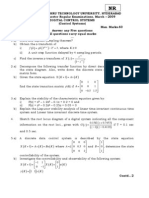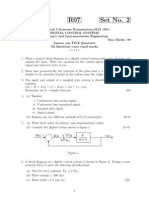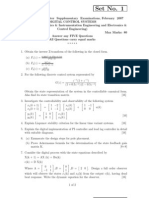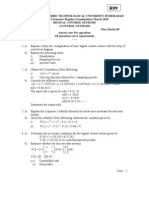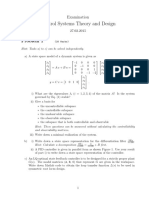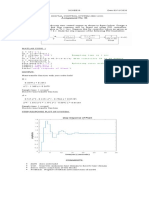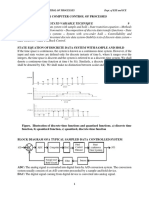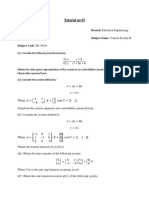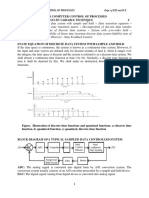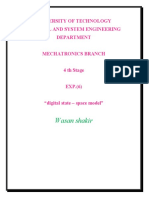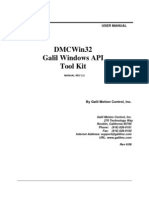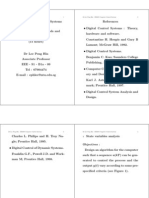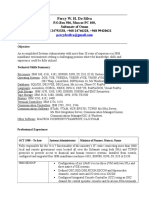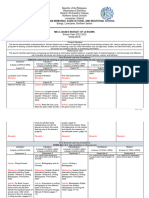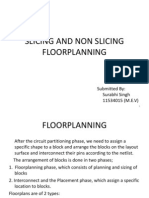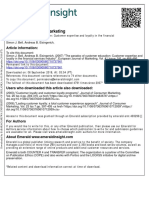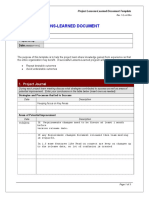0% found this document useful (0 votes)
234 views3 pagesComputer Control Systems Assignments
This document contains 7 questions regarding computer control systems for an assignment. It includes questions about obtaining state-space representations from difference equations and block diagrams, finding transfer functions, transforming systems into canonical forms, designing state feedback and observers, and solving a discrete time Riccati equation to determine an optimal control law. The due date for submitting the assignment is October 28, 2009.
Uploaded by
phatctCopyright
© Attribution Non-Commercial (BY-NC)
We take content rights seriously. If you suspect this is your content, claim it here.
Available Formats
Download as PDF, TXT or read online on Scribd
0% found this document useful (0 votes)
234 views3 pagesComputer Control Systems Assignments
This document contains 7 questions regarding computer control systems for an assignment. It includes questions about obtaining state-space representations from difference equations and block diagrams, finding transfer functions, transforming systems into canonical forms, designing state feedback and observers, and solving a discrete time Riccati equation to determine an optimal control law. The due date for submitting the assignment is October 28, 2009.
Uploaded by
phatctCopyright
© Attribution Non-Commercial (BY-NC)
We take content rights seriously. If you suspect this is your content, claim it here.
Available Formats
Download as PDF, TXT or read online on Scribd
/ 3



